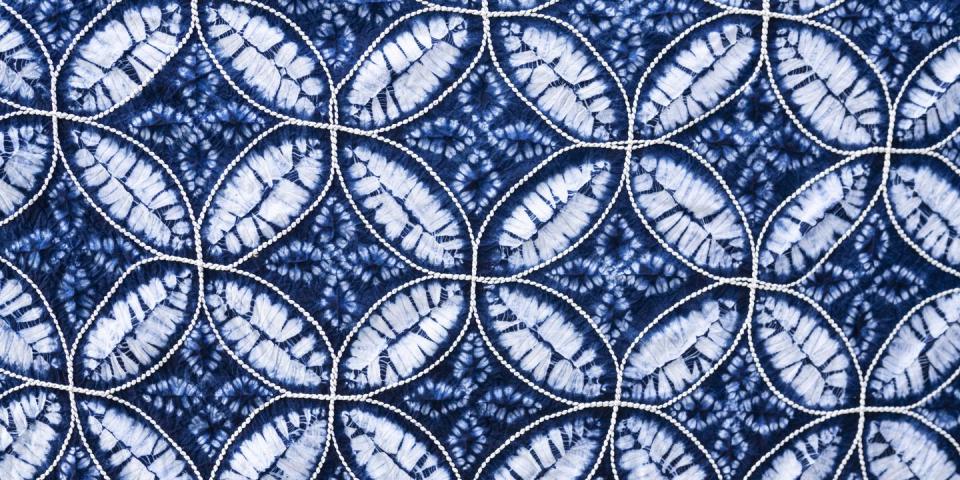The Art of Shibori, a Traditional Japanese Dye Technique

Resist-dyeing comes in many forms, from Indonesia’s wax-driven batik to the American tradition of tie-dye. In Japan, the prevailing resist-dyeing method is called shibori, which means “to wring” or “to squeeze.” As with all forms of resist-dyeing, patterns are added to raw fabric that is altered to resist the dye, thus leaving behind the natural fibers—in the case of shibori, this can be accomplished via a variety of techniques. Though the craft is hundreds of years old, it’s still popular today in markets around the world.
The History of Shibori
Though shibori is known as a Japanese craft, the method can actually be traced back to fifth-century China. (There was also a similar technique of dyeing used in sixth-century Peru, too.) The earliest examples from Japan that exist today are from the eighth century—shibori dyed cloth was discovered at the Todai-ji Temple in Nara, having been placed there as a gift from Emperor Shomu.
The peak of shibori production, however, did not occur until much later, during the 17th through the 19th centuries, or the Edo period. At that time, only the elite classes of society were permitted to wear silk, so the lower classes turned to highly decorative shibori textiles for their clothing.

Shibori Techniques
Shibori actually encompasses quite a number of different resist-dyeing techniques. Among them are the following:
Kanoko shibori: Like tie-dye, this method utilizes elastic bands to bind cloth tightly before dyeing, creating an organic-looking pattern.
Miura shibori: In this style of dyeing, practitioners pinch small sections of fabric and loop thread around them to create a repeated pattern.
Arashi shibori: Afabric is tightly wound around a pole, tied into place with thread, and scrunched to create a pattern. The result is a diagonal, linear pattern.
Kumo shibori: Small found objects like pebbles are bound with thread into fabric in this technique, which ultimately creates circular, web-like patterns.
Nui shibori: This intricate method uses stitching to create precise cinched patterns in fabric; the stitching is removed after dyeing.
Itajime shibori: Rather than using binding and cinching to create patterns, this technique employs the use of shaped blocks (traditionally of wood, though sometimes of plastic) between which folded fabric is sandwiched.
Shibori Characteristics
There are several characteristics that differentiate shibori from American tie-dye, namely that the pattern is typically much more elaborate. Additionally, while shibori textiles can come in any color, they’re most often single-hued, with indigo being the traditional dye used.

Shibori in Contemporary Decor
The textile technique was originally used for clothing, and that trend continued from the late 19th into the early 20th century, when European and American cultures became fascinated with Japanese arts and crafts. Even in the contemporary day, you can find clothing made from shibori textiles, but the craft has also made its way into the realm of home decor, from curtains to throws to pillows.
Follow House Beautiful on Instagram.
You Might Also Like

